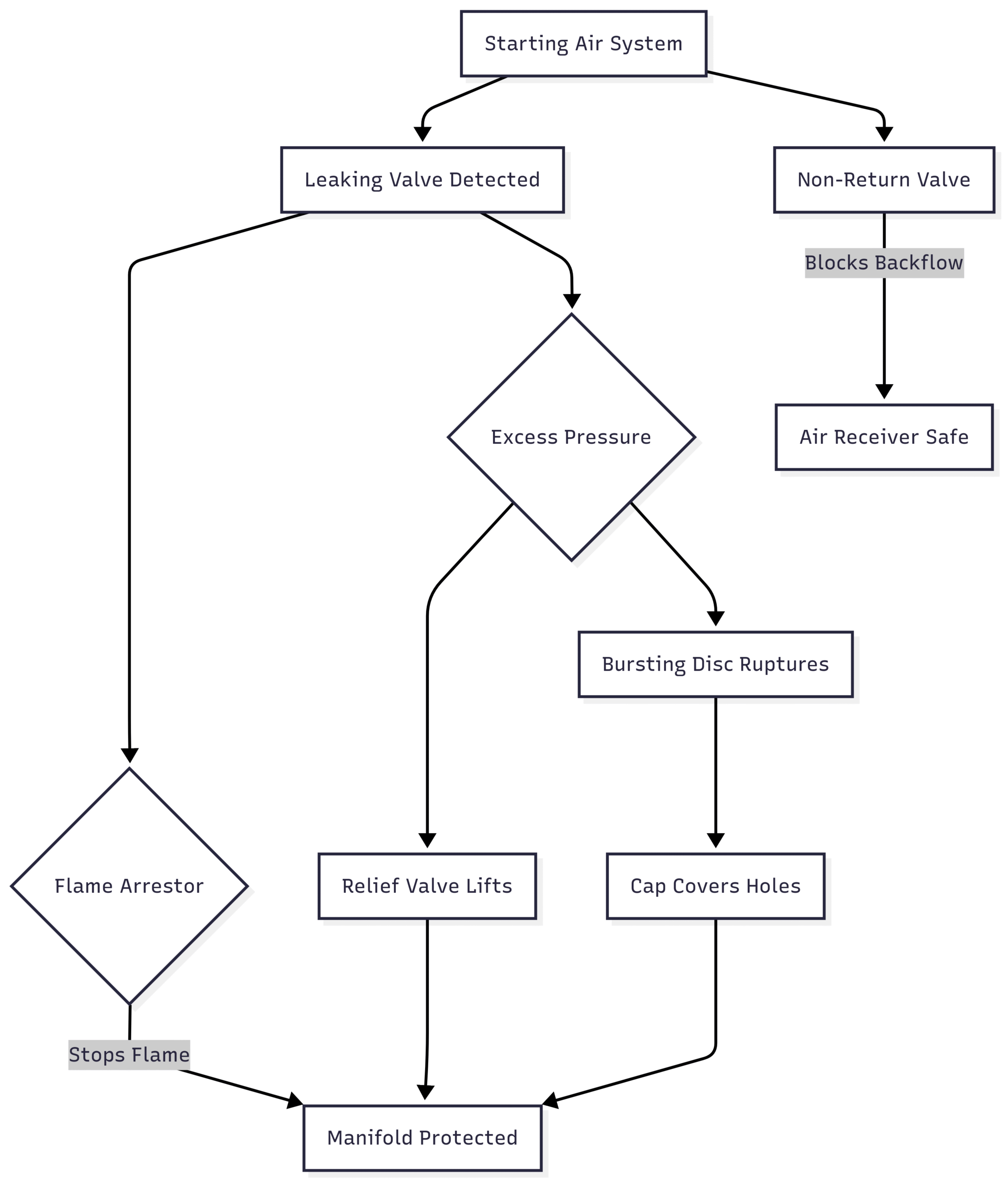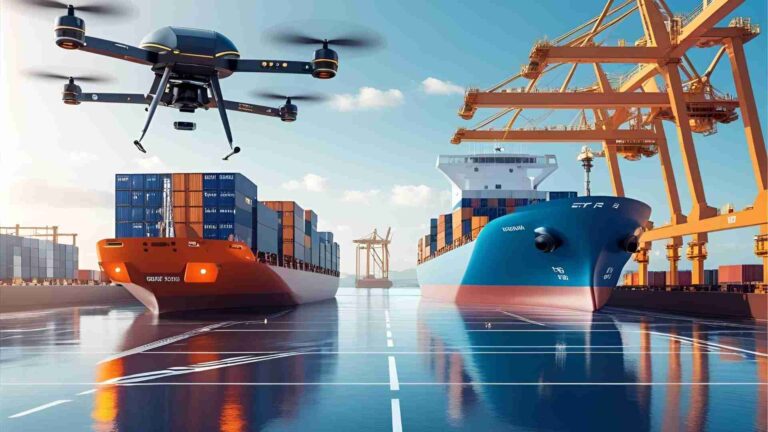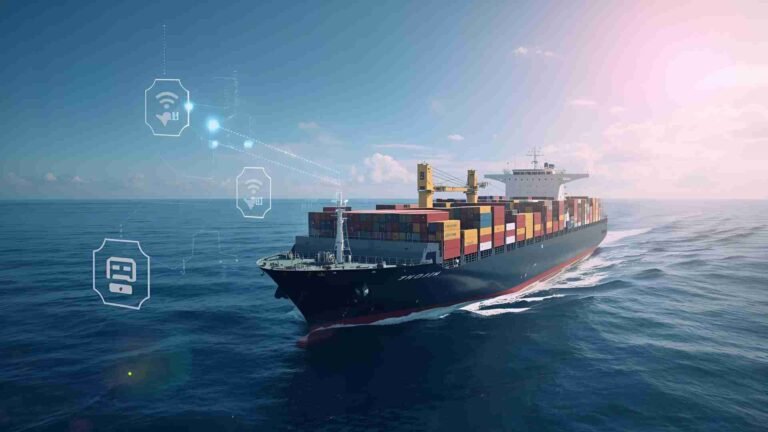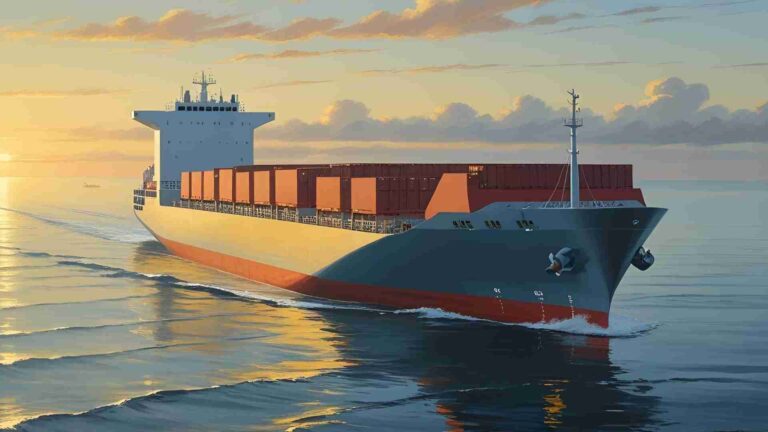How to Prevent Starting Air Line Explosion on Ships?
Learn how to prevent starting air line explosions on ships with expert maintenance tips, safety devices, and operational best practices.
Starting air line explosions in marine diesel engines pose a significant threat to ship safety, causing potential equipment damage, personnel injuries, and fire hazards. These incidents occur when a combustible mixture of oil vapor and compressed air ignites within the starting air system, often due to preventable factors like leaking valves or improper maintenance. This comprehensive guide explores the causes, risks, and prevention strategies for starting air line explosions, equipping marine engineers and ship operators with actionable insights to enhance safety and operational reliability.
Understanding Starting Air Line Explosions
A starting air system is critical for initiating the operation of marine diesel engines. It uses compressed air, typically stored at 30 bar in air receivers, to turn the engine over and start combustion. However, when conditions align—oxygen, fuel, and a heat source—an explosion can occur within the air lines or manifold, leading to catastrophic consequences.
The Fire Triangle in Starting Air Systems
For an explosion to occur, the fire triangle must be complete:
- Oxygen: Abundant in the compressed air within the system.
- Fuel: Typically lube oil carried over from the air compressor or accumulated oil deposits.
- Heat: Often introduced by leaking air start valves, hot combustion gases, or autoignition of oil at high temperatures.
When these elements combine in the right proportions, ignition can result in a sudden and violent release of energy, damaging the system and endangering lives.
Causes of Starting Air Line Explosions
Several factors contribute to starting air line explosions, primarily stemming from maintenance oversights or operational errors. Below are the key causes:
- Leaking Starting Air Valves
A faulty or worn air start valve allows hot combustion gases from the cylinder to enter the starting air manifold. These gases can ignite oil vapor, initiating an explosion. Leaks often occur due to worn valve seats or improper sealing. - Excessive Lubrication
Over-lubrication of the main air compressor leads to oil carryover into the air lines. This oil accumulates as a thin film, creating a combustible mixture when exposed to heat. - Oil and Carbon Deposits
Lube oil, fuel residue, or carbon deposits from the compressor or cylinder can build up in the manifold. These deposits become ignition sources under high temperatures or when exposed to flames. - Incorrect Pressure Settings
Improperly calibrated fuel injectors or pressure regulators can disrupt the air-fuel balance, increasing the risk of a combustible mixture forming. - Hot Gases from Cylinder
If the engine is restarted before cooling down, residual hot gases can enter the air start system, igniting oil vapor. - Autoignition
Oil deposits in the manifold may self-ignite under the high temperatures generated by compressed air, particularly during prolonged operation. - Moisture Accumulation
Water in the air lines can cause corrosion, weakening components and leading to leaks. Contaminated moisture mixed with oil heightens explosion risks. - Component Failures
Worn or faulty components, such as pressure relief valves or hoses, can cause sudden pressure surges, creating hazardous conditions.
Risks of Starting Air Line Explosions
The consequences of an explosion in the starting air system are severe, impacting both equipment and personnel:
- Equipment Damage: Explosions can rupture the air manifold, damage valves, and impair the engine, leading to costly repairs and downtime.
- Personnel Injuries: High-pressure explosions may cause burns, lacerations, or fatalities among crew members in the engine room.
- Fire Hazard: Ignition of nearby flammable materials can trigger a fire, potentially spreading to other areas of the ship.
- Loss of Propulsion: If the main engine is affected, the ship may lose control, increasing the risk of collisions or grounding.
Preventive Measures for Starting Air Line Explosions
Preventing starting air line explosions requires a proactive approach to maintenance, monitoring, and adherence to safety protocols. Below are the most effective strategies:
1. Regular Maintenance of Components
Routine inspections and overhauls of air start valves, distributors, and compressors are essential. Key actions include:
- Checking valve seats for wear and lapping them to ensure proper sealing.
- Inspecting compressors for oil leaks or worn seals.
- Cleaning the starting air manifold to remove oil and carbon deposits.
2. Proper Lubrication Practices
Maintain optimal lubrication levels in the air compressor to prevent oil carryover. Use oil-wetted suction filters and ensure the oil separator at the compressor discharge is functioning efficiently.
3. Regular Draining of the System
Drain air bottles, receivers, and the starting air manifold during every watch to remove accumulated water, oil, and contaminants. Check auto-drain systems for proper operation.
4. Leakage Testing
Conduct air start valve leakage tests before maneuvering the engine. Methods include:
- When Engine is Running: Feel the air start line for excessive heat or listen for relief valve activity.
- When Engine is Stopped: Open indicator cocks and check for air escaping, indicating a leak.
5. Temperature Monitoring
Monitor the temperature of the starting air manifold and adjacent pipes. Paint deformation or excessive heat indicates potential overheating or leaks.
6. Adherence to Manufacturer Guidelines
Follow the engine manufacturer’s recommendations for maintenance schedules, lubrication rates, and operational procedures.
Safety Devices for Explosion Prevention
Modern marine engines are equipped with safety devices to mitigate the risk of starting air line explosions. These devices are designed to relieve pressure, contain flames, or prevent backflow. Below is a detailed overview:
| Safety Device | Function | Location |
|---|---|---|
| Relief Valve | Lifts to release excess pressure in the manifold, reseating to maintain air supply. | End of the common air manifold. |
| Bursting Disc | Bursts under excessive pressure to release energy, with a cap to cover holes for continued operation. | Starting air pipe. |
| Non-Return Valve | Prevents explosion gases from reaching the air receiver. | Between air manifold and receiver. |
| Flame Arrestor | Stops flame propagation from the cylinder to the manifold. | Before each cylinder’s air start valve. |
| Manifold Drain Valve | Removes accumulated oil, water, or debris from the manifold. | Inlet of the automatic air start valve. |
Chart: Safety Device Workflow
Below is a flowchart illustrating how safety devices work together to prevent explosions:

Maintenance of Safety Devices
- Relief Valves: Test regularly to ensure they lift and reseat correctly.
- Bursting Discs: Replace after rupture or after specified running hours. For reusable discs, perform annealing as per manufacturer guidelines.
- Flame Arrestors: Inspect tubes for blockages or damage.
- Non-Return Valves: Verify unidirectional flow during maintenance checks.
- Drain Valves: Ensure proper operation and clear any obstructions.
Detecting Leaking Air Start Valves
Identifying leaks in air start valves is critical for preventing explosions. The detection process varies depending on the engine’s operational state:
When the Engine is Running
- Heat Check: Touch adjacent pipes to feel for excessive heat, indicating a leak.
- Relief Valve Activity: Listen for frequent lifting or loud noises from the relief valve.
- Bursting Disc Failure: Check for ruptured discs, signaling severe pressure buildup.
- Smoke from Drain: Observe for smoke or vapors, suggesting abnormal pressure or temperature.
When the Engine is Stopped
- Indicator Cock Test:
- Shut the isolating valve of the starting air distributor.
- Open all indicator cocks.
- Disengage the turning gear.
- Open the main air bottle stop valve.
- Set the control lever to the starting position.
- Check for air escaping through indicator cocks, indicating a leaking valve.
Leaking valves should be replaced immediately to prevent further risks.
Role of the Negative Cam in Air Distributors
A negative cam in the air starting distributor enhances safety and reliability by:
- Ensuring positive closure of stuck valves to prevent unintended engine starts.
- Blocking valve activation without sufficient pilot air pressure.
- Keeping rollers lifted during engine operation to reduce wear.
- Minimizing component wear by preventing roller-cam contact.
This design reduces maintenance needs and enhances system longevity.
Emergency Response to Starting Air Line Explosions
In the event of an explosion, swift action is critical to minimize damage and ensure safety:
- Notify the Bridge: Inform the control room immediately.
- Stop the Engine: Request engine shutdown if safe.
- Cut Off Fuel Supply: Isolate fuel to affected cylinders to prevent fires.
- Prepare Valve Replacement: Have a spare air start valve ready for installation.
- Monitor the Situation: Stay in communication with the bridge and crew.
- Follow Safety Protocols: Adhere to established emergency procedures.
- Investigate Causes: Conduct a post-incident analysis to prevent recurrence.
Specifications and Costs of Safety Devices
Below is a table outlining typical specifications and approximate costs for safety devices (based on general marine industry standards):
| Device | Specifications | Approx. Cost (USD) |
|---|---|---|
| Relief Valve | 30 bar, stainless steel, spring-loaded | $200–$500 |
| Bursting Disc | 35 bar burst pressure, reusable or disposable | $100–$300 |
| Non-Return Valve | 30 bar, brass or stainless steel | $150–$400 |
| Flame Arrestor | Multi-tube design, corrosion-resistant | $50–$200 per cylinder |
| Drain Valve | Manual or auto, 30 bar rating | $50–$150 |
Note: Costs vary based on manufacturer, ship size, and regional suppliers. Contact suppliers like Wärtsilä or MAN Energy Solutions for precise pricing.
Conclusion
Starting air line explosions on ships are preventable with diligent maintenance, robust safety devices, and strict adherence to operational protocols. By addressing common causes like leaking valves and oil contamination, and leveraging devices such as flame arrestors and bursting discs, ship operators can significantly reduce risks. Regular inspections, proper lubrication, and crew training are the cornerstones of a safe starting air system. Implementing these strategies ensures not only the longevity of marine engines but also the safety of personnel and vessels at sea.
Happy Boating!
Share How to Prevent Starting Air Line Explosion on Ships? with your friends and leave a comment below with your thoughts.
Read Basics of Marine Diesel Engine Generators until we meet in the next article.






